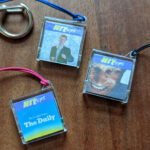Back in October, I noted the huge amounts of money pouring into music copyrights, largely driven by the global rise of online streaming. Since then, that trend has continued, most notably with Bruce Springsteen’s sale of his recordings and songwriting catalogue to Sony, for a rumored $550 million. As I pointed out in the post, one of the problems with this “financialization” of the sector is that music copyrights become completely divorced from the original creativity that lies behind them. They become just another asset, like gold, petroleum or property. On the Open Future blog, Paul Keller has pointed out a plausible – and terrifying – consequence of this shift.
As Keller notes, the more the owners…
Why we need to revisit the origin of blue hyperlink While musing over my recently published article, Why are hyperlinks blue, I was left feeling a bit blue myself. Yes, it could have been the fact that I was evacuated and Hurricane Ida was destroying my home, I’ll admit. Besides that, I was also bothered by the fact that even though I was able to determine that Mosaic was indeed the first browser to use blue hyperlinks, I was not much closer to determining why the hyperlinks themselves were blue. Black hyperlinks had been the standard for many years, but why the sudden shift to blue? One can assume that it is because RGB phosphorescent monitors…
External feed Read More at the Source: https://blog.mozilla.org/en/internet-culture/why-are-hyperlinks-blue-revisited/
On January 10, New York Assemblymember John Salka introduced A8683. It reduces the number of signatures for statewide independent candidates, and the nominees of unqualified parties, from 45,000 to 15,000. It also cuts the number of votes for a party … Continue reading →
External feed Read More at the Source: https://ballot-access.org/2022/01/11/new-york-ballot-access-bill-introduced/

In August 2000, Tiger Electronics released HitClips: Music cartridges and players designed to easily share 60 second low quality Clips of a youngster’s favorite Hits. Various players were available, and individual cartridges were inexpensive enough to collect. And it’s these toy music players that [Guy Dupont] has been hacking quite successfully on as you can see in the video after the break and on [Guy]’s Hackaday.io page.
Two PCB’s make up the new cartridge
[Guy]’s main goal was to make cartridges of his own that could not just hold more music than the short clips in the commercially made product, but could make use of modern technology that has matured since HitClips came onto the scene more than…
